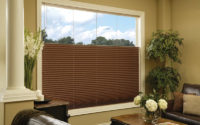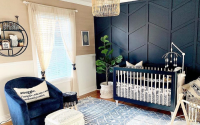Beauty and Durability: How to Select the Ideal Wooden Flooring for Your Home
The flooring in your home sets the tone and character of the entire space, so the choice you make can make a huge difference. Among the many options available, wooden flooring stands out for its elegance, timeless appeal, and durability. And with the Australian climate which can vary dramatically from coastal humidity to arid interiors, choosing the right type of wood is crucial.
Types of Wooden Flooring
Wooden flooring comes in various forms, each with its unique features and benefits. Here are some of the most popular types you can find in a well-stocked flooring shop across Australia.
Solid Hardwood
Made from a single piece of wood, solid hardwood flooring is known for its durability and longevity. It can be sanded and refinished multiple times over, making it a long-term investment.
Engineered Wood

Consisting of a layer of hardwood on top of high-quality plywood, engineered wood offers greater stability in fluctuating humidity levels, making it suitable for areas where solid hardwood might not be ideal.
Laminate
While not actually wood, laminate flooring imitates the appearance of timber through a photographic layer covered with a protective coating. It’s more affordable and resistant to scratches and dents, and it’s easy to install and maintain.
Hybrid Flooring
Hybrid flooring is an innovative flooring solution. It’s a fusion of the best laminate and vinyl flooring features without the drawbacks. The result is a floor that pairs the aesthetics and simple installation of the laminate with the enduring resilience and water resistance of the vinyl. These planks are constructed with multiple layers, each contributing to the floor’s overall performance.
What Are the Benefits of Wooden Flooring?
- Aesthetic Appeal: Wood floors add warmth and character to any room, complementing various decor styles from traditional to modern.
- Durability: Quality wooden floors can last for generations with proper care and maintenance.
- Easy Maintenance: Regular sweeping and occasional mopping are usually sufficient to keep wooden floors clean.
- Improved Indoor Air Quality: Unlike carpets, wooden floors don’t trap dust, allergens, or pet dander, making them a healthier choice for those with allergies.
- Increased Property Value: Wooden flooring is often seen as a premium feature, potentially increasing a property’s resale value.
- Versatility: Wood floors can be stained or painted to match changing decor preferences over time.
- Acoustic Properties: Solid wood floors can help reduce hollow sounds or vibrations, contributing to a more pleasant acoustic environment.
Considerations When Choosing Wooden Flooring
- Climate and Humidity: Australia’s diverse climate means that some woods may perform better in certain regions. Hybrid floors, for example, tend to be more stable in areas with fluctuating humidity.
- Hardness: The hardness scale rates woods based on their resistance to denting and wear. Harder woods like Spotted Gum or Ironbark may be more suitable for high-traffic areas.
- Colour and Grain: Think about how the wood’s colour and grain pattern will enhance your current interior design and how it may change as time goes on.
- Installation Method: Some flooring types are better suited for DIY installation, while others may require professional installation.
- Subfloor Condition: The condition of your subfloor can influence which type of wooden flooring is most suitable.
- Maintenance Requirements: Some woods and finishes require more upkeep than others. Think about your lifestyle and the amount of time you are willing to spend on taking care of your floors.
- Budget: Wooden flooring options vary widely in price. Factor in not just the cost of materials, but also installation and potential future refinishing costs.
Best Timber Flooring Options in Australia
Australia is home to several high-quality native timber species that make excellent flooring choices:
• Spotted Gum: Known for its distinctive wavy grain pattern and range of colours from light brown to deep red-brown. It’s extremely hard-wearing and suitable for both indoor and outdoor use.
• Blackbutt: A pale brown to light yellow wood with a straight grain. It’s naturally fire-resistant and very durable, making it popular in bushfire-prone areas.
• Jarrah: This Western Australian timber is prized for its rich, deep red colour that darkens beautifully with age. It’s extremely dense and resistant to rot and insects.
• Tasmanian Oak: Despite its name, it’s actually a eucalyptus. It has a lovely pale pink to light brown colour and accepts stain well, allowing for versatile styling options.
• Blue Gum: With colours ranging from pale pink-brown to rich reddish-brown, Blue Gum is a hardwearing option that adds character to any space.
• Brushbox: This species offers a fine, even texture with a subtle pink hue. It’s known for its hardness and resistance to splintering, making it great for active households.
When selecting Australian timber, it’s important to ensure your flooring shop uses sustainable sourcing. Look for certification from responsible forestry programs to ensure your beautiful floors don’t come at the cost of our unique ecosystems.
Takeaway

Wooden flooring offers a combination of beauty, durability, and versatility that few other flooring options can match. Consider the unique characteristics of different wood types, your specific needs, and the Australian climate, and select a wooden floor that will enhance your home for years to come. Whether you opt for the rich tones of Jarrah, the durability of Spotted Gum, or the pale elegance of Tasmanian Oak, a well-chosen wooden floor is an investment in both the aesthetics and value of your home.



